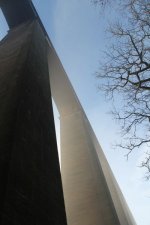wfrancis
Aluminum
- Joined
- Apr 18, 2012
- Location
- San Francisco, USA
With the wife and some friends I managed to finally achieve a dream - taking a narrowboat over the amazing Pontcysyllte aqueduct on the Llangollen canal which runs between Wales and England. Engineered by one of my industrial engineering heros, Thomas Telford, he built it out of the crazy new material of the day - cast iron - so it wouldn't collapse under its great weight at the height needed to cross the river (126 ft!). It remains the tallest and longest aqueduct in Britian even over 200 years later! Not only is the aqueduct (and there's a second at Chirk which is also amazing) amazing feats of engineering, the surrounding area is incredibly beautiful and an 11 mile stretch of the canal is a protected UNESCO World Heritage Site. This to say nothing of the 21 locks which are also from the 1790s (not the actual gates though which get replaced every couple decades) which you get to operate as you traverse the canal. When you take a narrowboat down the canal it's a huge trip back in time (one Canal and River Trust volunteer I talked to called it a "Linear History Museum") with the biggest difference being your boat has a diesel engine rather than being horse drawn. Other than that as you wind through the at times fairly remote countryside it might be hard to which century you're in.
I made a little video which highlights some aspects of our trip but really there's so much that was left out. A highly recommended holiday if you have the chance!
I made a little video which highlights some aspects of our trip but really there's so much that was left out. A highly recommended holiday if you have the chance!



 It made me think of the Falkirk wheel boat lift to connect 2 canals of very different elevations:
It made me think of the Falkirk wheel boat lift to connect 2 canals of very different elevations:



